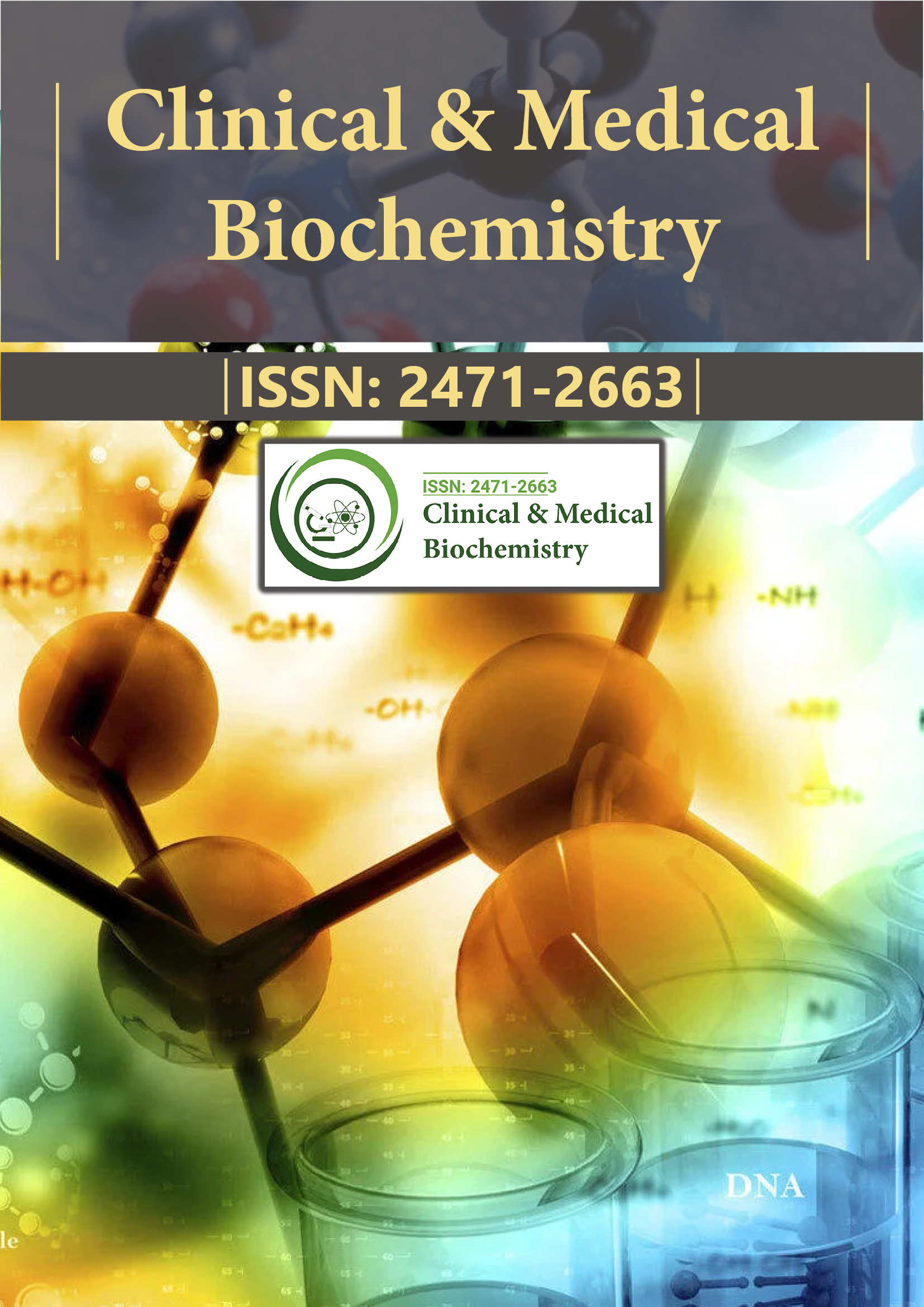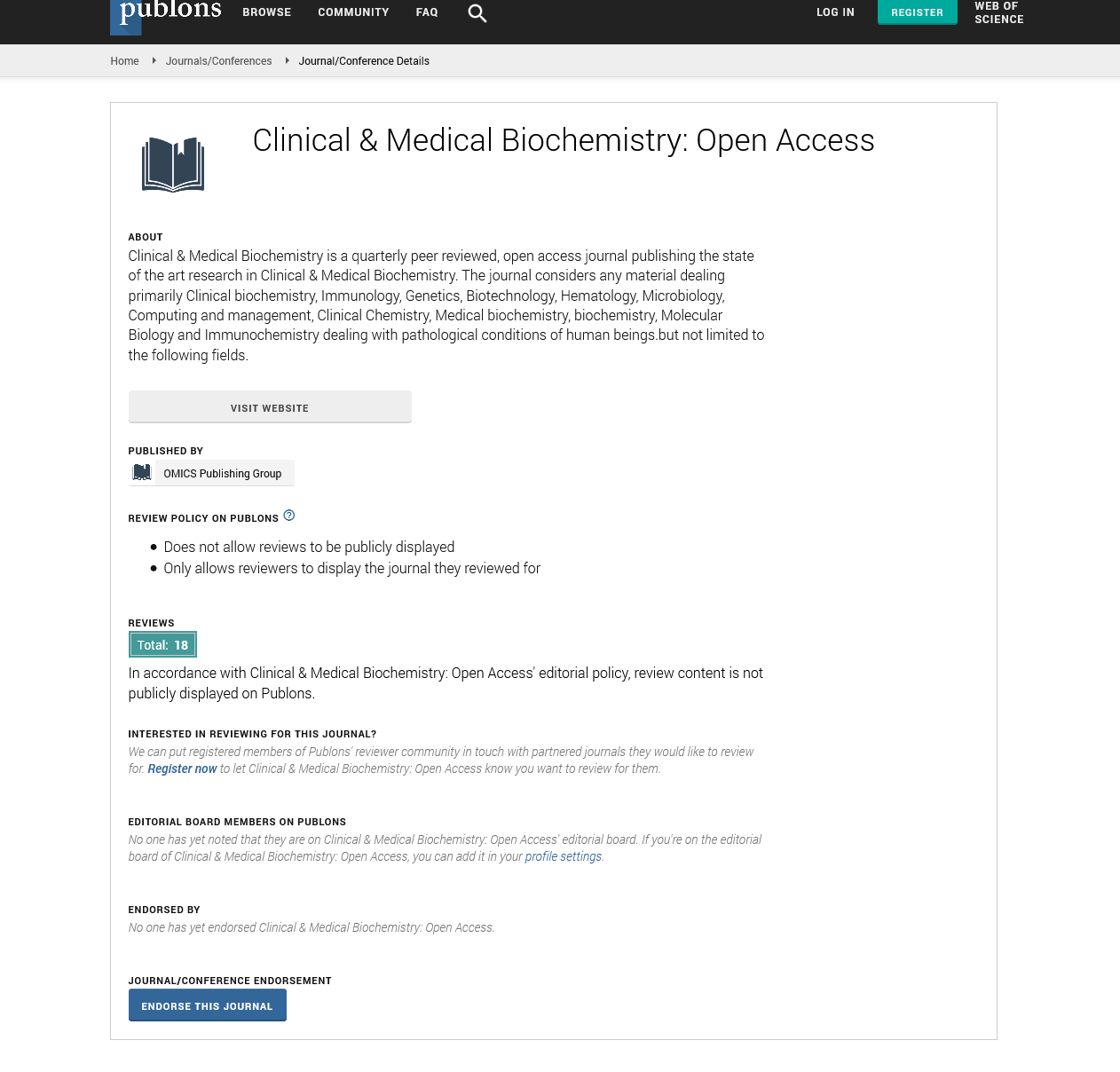Indexed In
- RefSeek
- Directory of Research Journal Indexing (DRJI)
- Hamdard University
- EBSCO A-Z
- OCLC- WorldCat
- Scholarsteer
- Publons
- Euro Pub
- Google Scholar
Useful Links
Share This Page
Journal Flyer

Open Access Journals
- Agri and Aquaculture
- Biochemistry
- Bioinformatics & Systems Biology
- Business & Management
- Chemistry
- Clinical Sciences
- Engineering
- Food & Nutrition
- General Science
- Genetics & Molecular Biology
- Immunology & Microbiology
- Medical Sciences
- Neuroscience & Psychology
- Nursing & Health Care
- Pharmaceutical Sciences
Brief Report - (2022) Volume 8, Issue 1
A Brief Note on Therapeutic Drug Monitoring
Ju Ho Lee*Received: 04-Jan-2022, Manuscript No. CMBO-22-114; Editor assigned: 06-Jan-2022, Pre QC No. CMBO-22-114 (PQ); Reviewed: 20-Jan-2022, QC No. CMBO-22-114; Revised: 24-Jan-2022, Manuscript No. CMBO-22-114 (R); Published: 31-Jan-2022, DOI: 10.35248/2471-2663.22.8.114
Description
Therapeutic drug monitoring (TDM) is a test that measures the amount of a particular drug in the blood. It is done to make sure that the amount of medicine you are taking is safe and effective. Most medicines can be given correctly without any special tests. However, with certain types of drugs, it can be difficult to find a dose that contains enough drugs to treat the condition without causing dangerous side effects. TDM helps your doctor make sure you are taking the right amount of medication. Therapeutic drug monitoring (TDM) is also known as clinical practice in which specific drugs are measured at specific intervals in order to keep the concentration in the patient’s bloodstream constant and thereby optimize individual dosing regimens. It has been found that most drugs do not require the use of TDM, mainly drugs with a narrow range of treatment, drugs with significant pharmacokinetic fluctuations, drugs whose target concentration is difficult to monitor, and drugs that have therapeutic effects and cause adverse effects. It is used to monitor the drugs that are being used. The process of TDM is based on the assumption that there is a clear relationship between dose and plasma or blood drug concentration, and between concentration and therapeutic effect. TDM begins with the initial prescribing of the drug and involves determining an initial dosing regimen that suits the patient’s characteristics such as clinical condition and age, weight, organ function, and concomitant drug therapy. Factors such as sampling time, dosing history, patient response, and desirable medical goals related to drug dosage should be considered when interpreting concentration measurements. The goal of TDM is to use appropriate concentrations of difficult to manage medications to optimize clinical outcomes in patients in various clinical situations.
Purpose of therapeutic drug monitoring
Performing TDM requires a multidisciplinary approach. Accurate and clinically significant drug concentrations are attainable with the aid of using collaboration with the TDM group, commonly comprised of scientists, clinicians, nurses, and pharmacists. Excellent communication amongst group contributors is important to make certain that excellent practices in TDM.
The indications for drug monitoring have widened to encompass efficacy, compliance, drug-drug interactions, toxicity avoidance, and therapy cessation monitoring. Plasma drug concentration measurements alone can be useful in numerous circumstances, despite the fact that every indication won’t practice similarly to each drug Measuring plasma concentrations can be useful, however, as a low measurement reflects either poor recent compliance or under treatment. Poor compliance is implicated if the affected person is prescribed a dose this is not likely to be related to a measured low concentration or if a previous measurement recommended that the plasma concentration need to be better for the given dose. When starting up drug therapy, the health practitioner might also additionally locate it beneficial to plasma drug concentration and tailor the dosage to the individual. This directive applies to all drugs, even though it most important for those with narrow therapeutic ranges such as lithium, cyclosporine, and aminoglycoside antibiotics.
If the dosage regimen must be changed for any reason at a later stage of therapy, for example in patients with renal impairment, re-measurement of plasma concentrations may be useful. Poor treatment of an identified condition may be concluded if poor clinical response is observed. However, when the drug is used prophylactically, it is not possible to monitor response. Thus, the physician can select a dose that will produce a certain target plasma concentration. This dictum applies especially to lithium to prevent manic attacks, to phenytoin to prevent attacks following neurosurgery or trauma, and to cyclosporin to prevent transplant rejection. In all cases, plasma concentration measurements obtained and scrutinized in the early stages of treatment allow the clinician to avoid toxic plasma concentrations. In many cases, drug toxicity can be diagnosed clinically. For example, acute phenytoin toxicity is relatively easy to recognize and measurement of plasma concentrations may not be necessary for diagnosis, although it may be useful in later dosage adjustments. On the other hand, digoxin toxicity can mimic some of the symptoms of heart disease, and measuring plasma concentrations in cases of suspected toxicity can be helpful in confirming the diagnosis.
Similarly, the nephrotoxicity of aminoglycoside antibiotics is clinically difficult to distinguish from those caused by severe systemic infections. Therefore, measuring plasma aminoglycoside levels can help distinguish between toxicity and infection. If drug-drug interactions are suspected, plasma concentration measurements may provide an indicator of subsequent dose changes. For example, when giving thiazide diuretics to patients taking lithium, measuring the plasma concentration of lithium helps avoid toxicity. If the patient’s renal function is stable and there are no signs or symptoms of digoxin toxicity.
The use of TDM requires a combined approach encompassing pharmaceutical, pharmacokinetic, and pharmacodynamic techniques and analyses. The appropriate use of TDM requires more than a simple measurement of patient blood drug concentration and a comparison to a target range. Rather, TDM plays an important role in the development of safe and effective therapeutic medications and individualization of these medications. Additionally, TDM can help to identify problems with medication compliance among noncompliant patient cases. When interpreting drug concentration measurements, factors that need to be considered include the sampling time in relation to the dose, the dosage history, the patient’s response, and the desired clinical targets. This information can be used to identify the most appropriate dosage regimen to achieve the optimal response with minimal toxicity.
Citation: Lee JH (2022) A Brief Note on Therapeutic Drug Monitoring. Clin Med Bio Chem. 8:114.
Copyright: © 2022 Lee JH. This is an open-access article distributed under the terms of the Creative Commons Attribution License, which permits unrestricted use, distribution, and reproduction in any medium, provided the original author and source are credited.

